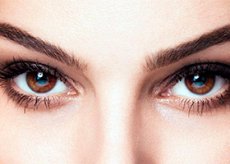Medical expert of the article
New publications
Confocal scanning laser ophthalmoscopy
Last reviewed: 06.07.2025

All iLive content is medically reviewed or fact checked to ensure as much factual accuracy as possible.
We have strict sourcing guidelines and only link to reputable media sites, academic research institutions and, whenever possible, medically peer reviewed studies. Note that the numbers in parentheses ([1], [2], etc.) are clickable links to these studies.
If you feel that any of our content is inaccurate, out-of-date, or otherwise questionable, please select it and press Ctrl + Enter.

How does confocal scanning laser ophthalmoscopy work?
The Heidelberg Retinal Tomograph (HRT; Heidelberg Engineering GmbH, Heidelberg, Germany) is the only confocal scanning laser ophthalmoscope currently available. This instrument uses a confocal scanning system based on the principle of point illumination and point registration. In this system, a single point on the retina or optic disc is illuminated only long enough to allow light from the illuminated area to pass through the aperture before scattered light and out-of-focus tissue surfaces have time to pass through. Thus, areas not adjacent to the plane of focus are not illuminated and are not visible. This allows high-contrast images to be obtained. In addition, it is possible to obtain a layer-by-layer (tomographic) image of the retina and optic disc. The HRT uses a 670 nm diode laser to scan and analyze the posterior segment of the eye. A three-dimensional image is obtained from a series of optical sections in successive focal planes from 16 to 64. The information is obtained in two images - a topographic and a mirror image. The topographic image consists of 256x256 or 384x384 pixel elements, each of which is an indicator of the height in the corresponding localizations. The optical resolution in the cross-section is approximately 10 μm, while in the longitudinal size the resolution is about 300 μm. In modern clinical practice, three scanograms are made on each eye, then they are averaged, creating an average topographic image. The image is also obtained with an undilated pupil, but with mydriasis, the image quality in patients with a narrow pupil and cataracts increases. Reproducibility is better with narrow pupils.
Restrictions
Confocal scanning laser ophthalmoscopy measurements of the optic disc require a reference plane to calculate many parameters: cup area, cup-to-cup ratio, cup volume, neuroretinal rim area, volume, retinal nerve fiber layer thickness, and retinal SNL cross-sectional area. The reference plane used by modern software may change over time, especially in glaucoma patients with changing topography. This change may lead to inaccurate measurements. The user should define the optic disc border. Cup shape, cup volume below surface level, average cup depth, maximum cup depth, and disc area are parameters that do not depend on the reference plane. Misalignment between the patient's horizontal plane and the scanner's horizontal plane is also a potential source of significant changes.


 [
[